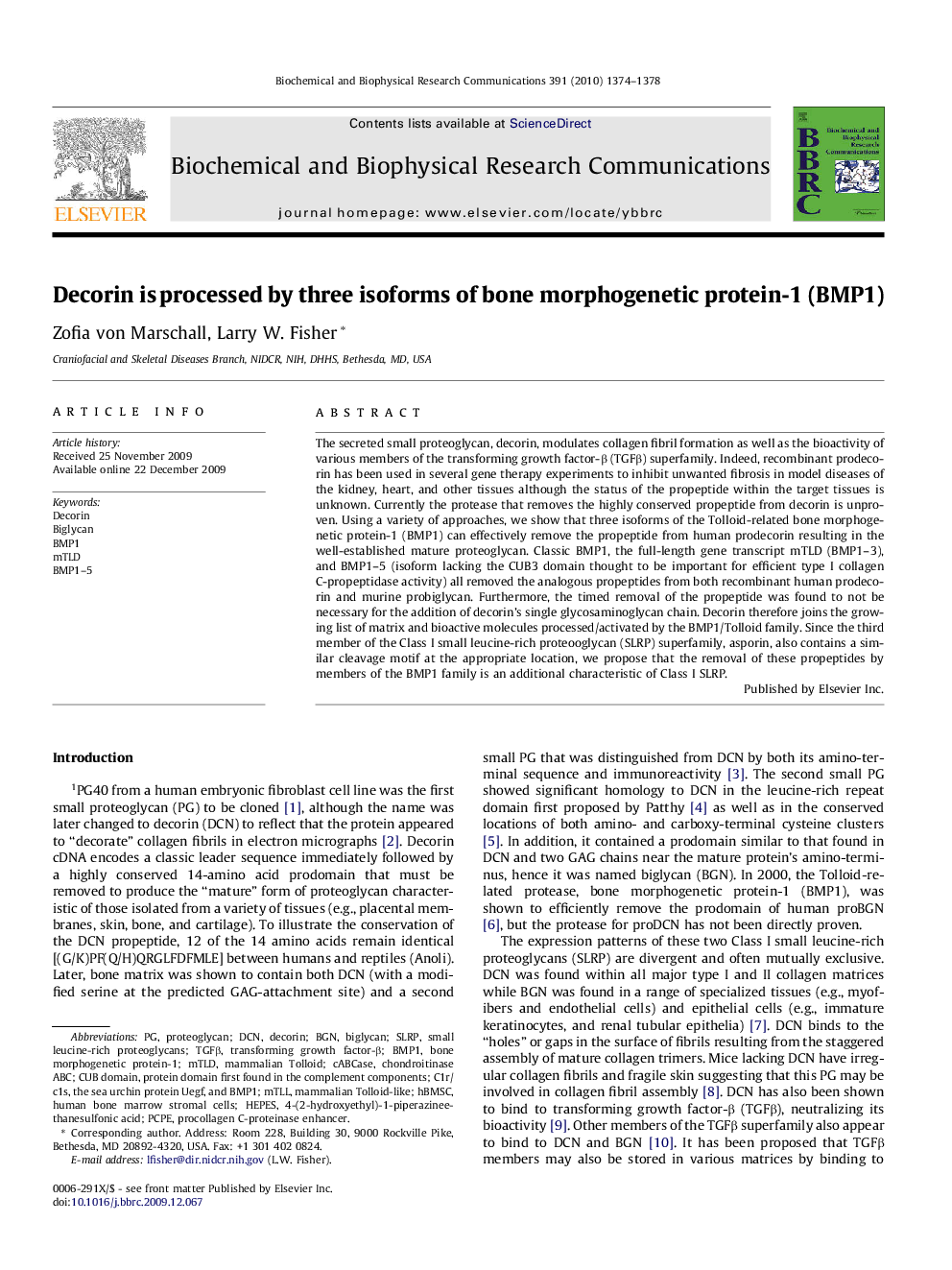| کد مقاله | کد نشریه | سال انتشار | مقاله انگلیسی | نسخه تمام متن |
|---|---|---|---|---|
| 1932514 | 1050584 | 2010 | 5 صفحه PDF | دانلود رایگان |

The secreted small proteoglycan, decorin, modulates collagen fibril formation as well as the bioactivity of various members of the transforming growth factor-β (TGFβ) superfamily. Indeed, recombinant prodecorin has been used in several gene therapy experiments to inhibit unwanted fibrosis in model diseases of the kidney, heart, and other tissues although the status of the propeptide within the target tissues is unknown. Currently the protease that removes the highly conserved propeptide from decorin is unproven. Using a variety of approaches, we show that three isoforms of the Tolloid-related bone morphogenetic protein-1 (BMP1) can effectively remove the propeptide from human prodecorin resulting in the well-established mature proteoglycan. Classic BMP1, the full-length gene transcript mTLD (BMP1–3), and BMP1–5 (isoform lacking the CUB3 domain thought to be important for efficient type I collagen C-propeptidase activity) all removed the analogous propeptides from both recombinant human prodecorin and murine probiglycan. Furthermore, the timed removal of the propeptide was found to not be necessary for the addition of decorin’s single glycosaminoglycan chain. Decorin therefore joins the growing list of matrix and bioactive molecules processed/activated by the BMP1/Tolloid family. Since the third member of the Class I small leucine-rich proteooglycan (SLRP) superfamily, asporin, also contains a similar cleavage motif at the appropriate location, we propose that the removal of these propeptides by members of the BMP1 family is an additional characteristic of Class I SLRP.
Journal: Biochemical and Biophysical Research Communications - Volume 391, Issue 3, 15 January 2010, Pages 1374–1378